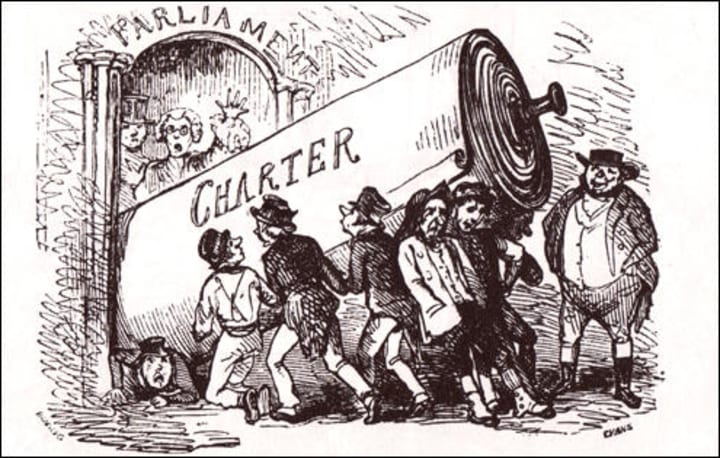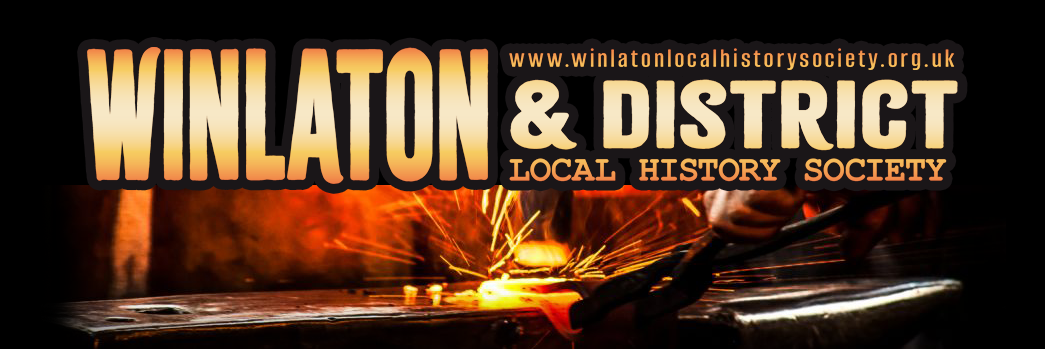
The Chartist movement was born amid the economic depression of 1837–38, when high unemployment and the effects of the Poor Law Amendment Act of 1834 were felt in all parts of Britain. The working classes had no way of improving their lives without a voice in parliament and a bill drafted by the London radical William Lovett in May 1838 contained six demands: universal manhood suffrage, equal electoral districts, vote by ballot,annually elected Parliaments, payment of members of Parliament, and abolition of the property qualifications for membership. It was the first movement both working class in character and national in scope.
In Winlaton much of Crowley’s business was with the admiralty and with the end of the Napoleonic wars orders declined. Winlaton was abandoned in 1816 with the firm (now Crowley, Millington & Co.) concentrating production at Swalwell and Winlaton Mill. This caused huge upheavel as Crowley’s had been virtually the sole employer, Crowley’s friendly society collapsed, and there was migration to the Midlands. The loss of Crowley’s works and the unemployment and disruption caused by this led Crowley’s crew away from their former Tory and royalist loyalties to become Radicals.The people of the village became very politically minded and were the most ardent supporters of the Charter in the North and were firmly in favour of physical force, if needed, to achieve their aims. They thought the way to support the petition was to be armed, drill with arms and march to London if need be, leading to the village became the local headquarters of the Chartist Movement. Meetings, which were well attended by women too, were held in the long room at the ‘Highlander’ public house, and at a Grand Radical Tea Party in December 1839 George Julian Harney the noted chartist leader addressed the crowd and gave a toast to the ‘The health and happiness of the cannie lasses of Winlaton’ he even sang to them, ‘When this old cap was new’.
August 1839 saw Winlaton turned into an armed fortress when Jacob Robinson was charged with disorderly conduct in Newcastle, on being searched two pike-heads were found on him, he told the Police they were being made in large quantities at Winlaton and he was immediately imprisoned. Shortly afterwards two of the Newcastle Chartists brought news that the cavalry was coming to search the village for arms. Two men with fife and drum called the village to arms. We can imagine these men marching around the village, drawing people out of the pubs and their homes, and the noise and shouting and cheering. Every entrance to the village was closed off and armed guards were in place, a cannon was fired with blank shot, then reloaded with grape, it was said the sound could be heard at Tynemouth Barracks, scores of men were ready to scatter caltrops on the roads. The Newcastle Journal reported that ‘the village of Winlaton has been for the last week the scene of one continued disturbance, guns firing and bands of Chartists parading’.
So, what happened next?
Well, the armed troops of the Government did not arrive and the people gradually dispersed back to their homes but for years and years afterwards numerous weapons were discovered hidden away in old houses and in wells and ponds.
Were the troops ever going to arrive – who knows – but the people were ready.
Northern Liberator
Newcastle Journal
History of Blaydon
The Militant Democracy
